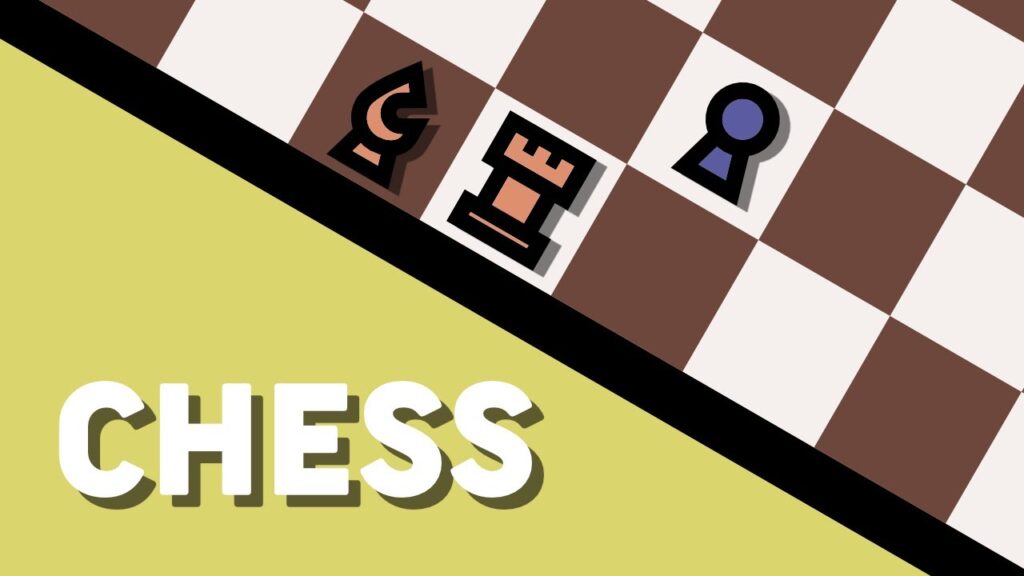Chess 2 player is not just a game; it’s a battle of wits, strategy, and foresight. Engaging in a chess match with a friend or opponent opens up a world of intellectual challenge and camaraderie. Understanding the fundamental rules, from the setup of the chessboard to piece movements, is essential for every aspiring player. This knowledge not only lays the foundation for a thrilling match but also equips players with strategies that can enhance their gameplay in any two-player setting.
As you dive deeper into the game, you’ll discover advanced strategies that can tilt the odds in your favor. Learning various opening strategies and mid-game tactics will empower you to disrupt your opponent’s plans effectively. Moreover, exploring different chess variants can provide a refreshing twist to your playing experience, sharpening your skills and expanding your understanding of this classic game.
Chess Basics for Two Players: Chess 2 Player
Chess is a classic strategy game that has captivated players for centuries. Understanding the fundamental rules and mechanics is essential for two players looking to engage in this intellectual duel. Learning the basics of chess not only enhances your gameplay but also deepens your appreciation for this intricate game.
The chessboard is an 8×8 grid consisting of 64 squares, alternating in color, typically black and white. Each player begins with 16 pieces: one king, one queen, two rooks, two knights, two bishops, and eight pawns. The pieces are set up in the first two rows closest to each player with the rooks in the corners, knights next to them, followed by bishops, the queen placed on her color, and the king on the remaining square. The pawns occupy the row in front of the other pieces.
Piece Movements
Understanding how each piece moves is crucial for effective play. Each type of chess piece has its unique movement patterns:
- King: Moves one square in any direction, including diagonally. The king cannot move into check, where it could be captured.
- Queen: Moves any number of squares in any direction—vertically, horizontally, or diagonally—making her the most powerful piece on the board.
- Rook: Moves any number of squares vertically or horizontally. Rooks become particularly powerful in the endgame.
- Bishop: Moves diagonally for any number of squares. Each bishop is limited to either black or white squares for the entire game.
- Knight: Moves in an “L” shape: two squares in one direction and then one square perpendicular, or vice versa. Knights can jump over other pieces.
- Pawn: Moves forward one square but captures diagonally. On their first move, pawns can advance two squares. If a pawn reaches the opposite end of the board, it may be promoted to any other piece, usually a queen.
Understanding these movements allows players to strategize effectively. Another crucial aspect of chess is developing a strategy to maximize your chances of winning.
Strategies for Beginners
Implementing effective strategies can greatly enhance a beginner’s chess experience. Here are some fundamental strategies to consider:
- Control the Center: Controlling the center of the board with your pieces allows for greater mobility and influence over the game.
- Develop Your Pieces: Move your pieces out from their starting positions quickly to control more squares and prepare for attacks.
- Protect Your King: Prioritize king safety, usually by castling early in the game to tuck the king away behind a wall of pawns.
- Think Ahead: Always consider your opponent’s possible responses to your moves. Anticipating their strategy will give you an advantage.
- Practice Tactical Patterns: Familiarize yourself with common tactical themes such as forks, pins, and skewers to improve your tactical awareness.
“In chess, as in life, the best moves are often the simplest.”
Building on these strategies can lead to improvement over time, making the two-player chess experience both enjoyable and intellectually rewarding.
Advanced Strategies for Competitive Play

In the world of chess, mastering advanced strategies can significantly enhance a player’s competitive edge. Players often find that a deep understanding of openings, mid-game tactics, and endgame strategies is crucial for outmaneuvering their opponents. This segment aims to delve into these sophisticated techniques, providing insights that can transform your game from average to exceptional.
Opening Strategies That Provide an Advantage
Opening strategies are vital because they set the tone for the entire game. A strong opening can lead to early advantages, while a weak one may leave you on the back foot. Here are some effective opening strategies that can provide a competitive edge:
- Control the Center: Dominating the center squares (e4, e5, d4, d5) allows greater mobility for your pieces and limits your opponent’s options.
- Development of Pieces: Rapidly develop your knights and bishops early in the game to prepare for an aggressive stance against your opponent.
- King Safety: Prioritize castling early to safeguard your king while connecting your rooks.
- Opening Repertoire: Familiarize yourself with various openings like the Sicilian Defense or the Ruy Lopez to adapt based on your opponent’s responses and tendencies.
Mid-Game Tactics That Disrupt Opponent’s Plans
The mid-game is often where the game gets intense, and understanding tactical plays can disrupt your opponent’s plans. Here are some tactics to consider:
- Forks: Utilizing one piece to attack two or more of your opponent’s pieces simultaneously can lead to material gain.
- Pins: Pinning an opponent’s piece to a more valuable piece can immobilize it and create favorable exchanges.
- Skewers: Similar to a pin, but here, a more valuable piece is forced to move, exposing a less valuable piece behind it.
- Discovered Attacks: Moving one piece to reveal an attack by another piece can surprise your opponent and create tactical opportunities.
Endgame Strategies Focusing on Common Piece Combinations
The endgame is where strategic finesse comes into play, often determining the outcome of the match. Understanding common piece combinations can enhance your chances of victory. Here are effective endgame strategies:
- King and Pawn vs. King: Use your king to support the pawn’s advance while controlling key squares to promote it to a queen.
- Rook and King vs. King: Utilize your rook to cut off the opponent’s king and gradually force it to the edge of the board.
- Bishop and Knight Checkmate: Although complex, combining these pieces effectively requires controlling key squares to lead the opponent’s king to the corner.
- Two Rooks Checkmate: Coordinate your rooks to control rows and ranks, leading to an inevitable checkmate.
“Mastering the endgame is just as crucial as dominating the opening; every piece has its role in securing victory.”
Chess Variants for Two Players

Exploring chess variants offers players fresh perspectives and challenges beyond traditional play, enhancing strategic thinking and adaptability. These variations maintain the spirit of chess while introducing unique twists that can be both entertaining and educational for two players.
Popular Chess Variants, Chess 2 player
Several popular chess variants stand out, each with its own set of rules and objectives, providing diverse experiences while keeping the essence of chess intact. Here are some notable examples:
- Blitz Chess: A faster version of standard chess where each player typically has 5 to 10 minutes to complete all their moves. The objective remains the same: to checkmate the opponent’s king, but the time constraint adds an element of urgency and requires quick thinking.
- Bughouse Chess: Played with four players in teams of two, this variant uses two boards. When a player captures a piece, they can pass it to their teammate, who can then place it on their board. The goal is still to checkmate the opponent’s king on their respective boards.
- Chess960 (Fischer Random Chess): The starting positions of the pieces are randomized, leading to 960 possible setups. While the objective remains to checkmate the opponent, the variant emphasizes creativity and adaptability from the very first move.
- Capablanca Chess: This variant adds two new pieces, the Chancellor and the Archbishop, to the standard chess set. The larger board (10×8) accommodates these additions, and the objective is still to checkmate the opponent, but with expanded tactical possibilities.
Comparison of Rules and Objectives
Understanding the differences between these variants and standard chess can enhance players’ appreciation for the game and improve their strategic thinking.
| Variant | Board Size | Time Control | Objective |
|---|---|---|---|
| Standard Chess | 8×8 | Varies | Checkmate the opponent’s king |
| Blitz Chess | 8×8 | 5-10 minutes per player | Checkmate the opponent’s king |
| Bughouse Chess | 2 x 8×8 | Varies | Checkmate the opponent’s king on either board |
| Chess960 | 8×8 | Varies | Checkmate the opponent’s king |
| Capablanca Chess | 10×8 | Varies | Checkmate the opponent’s king |
Improving Traditional Chess Skills
Engaging in chess variants can significantly enhance a player’s overall chess skills. The unique challenges presented by these games encourage players to think outside the box and develop new strategies.
“Chess variants stimulate creativity and adaptability, key traits for success in traditional chess.”
Playing variants like Blitz necessitates quick decision-making and time management, while Chess960 promotes understanding of the game fundamentals since players cannot rely on memorized openings. Bughouse fosters teamwork and tactical collaboration, which can translate to improved communication and strategic planning in standard games.
Overall, these variants enrich the chess-playing experience, making it more dynamic and enjoyable while honing the fundamental skills required for success in traditional chess.
If you’re looking for some engaging fun, you should definitely check out poki games online. These games offer a wide variety of options that cater to different tastes, whether you enjoy puzzles, action, or strategy. They are easy to access and perfect for a quick gaming break, making them a great choice for both casual players and serious gamers alike.
If you’re on the lookout for engaging entertainment, poki games online can be a fantastic option. These games offer a variety of genres, ensuring there’s something for everyone. Whether you’re in the mood for puzzles, action, or strategy, you’ll find a game that suits your taste and keeps you entertained for hours. It’s an excellent way to unwind after a long day!

